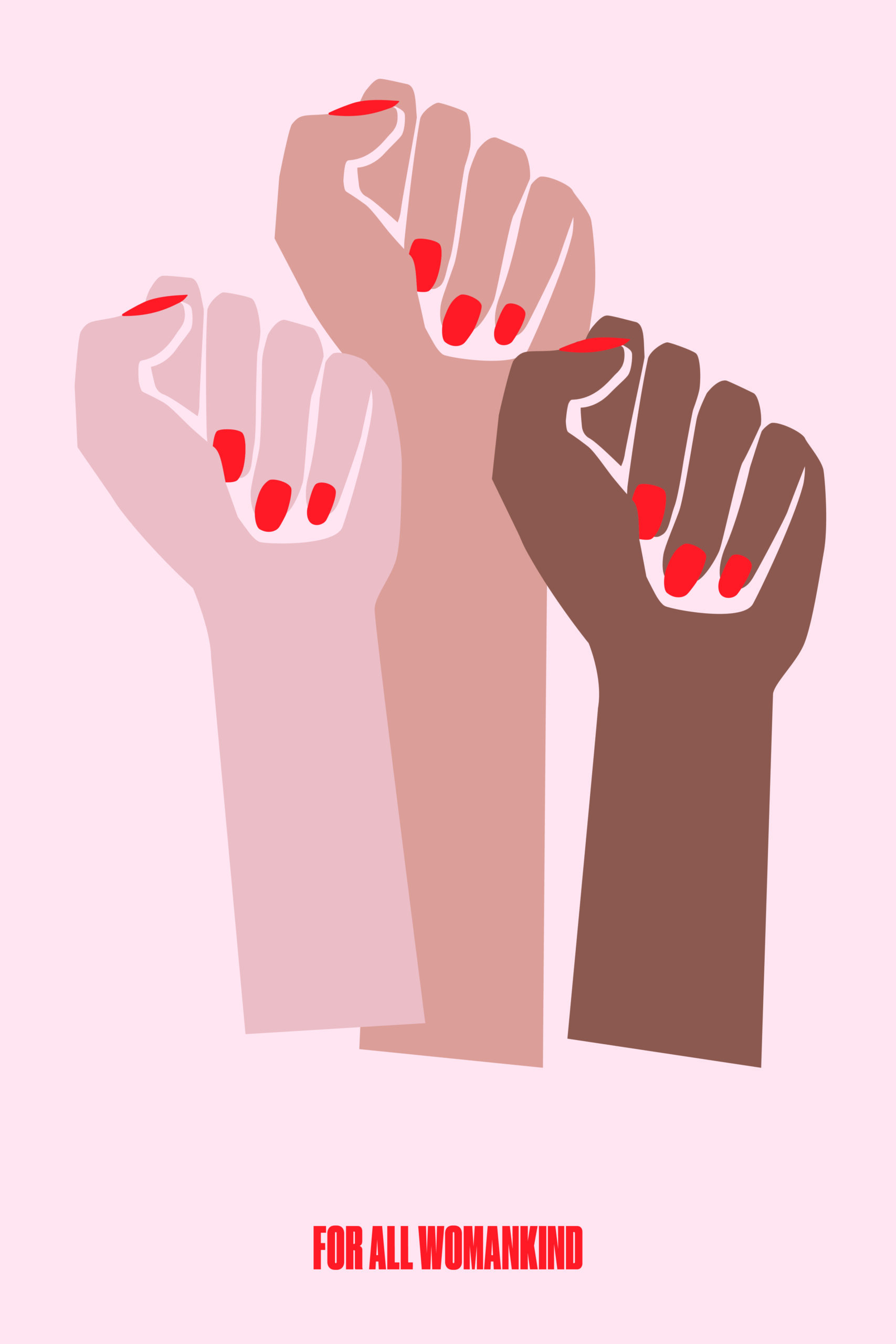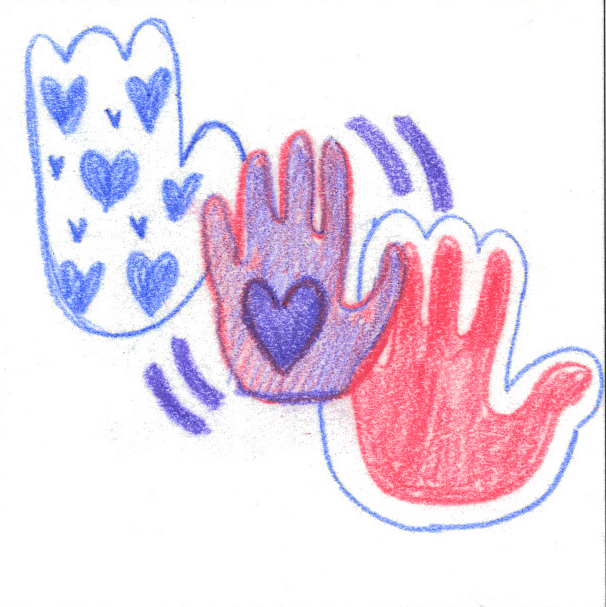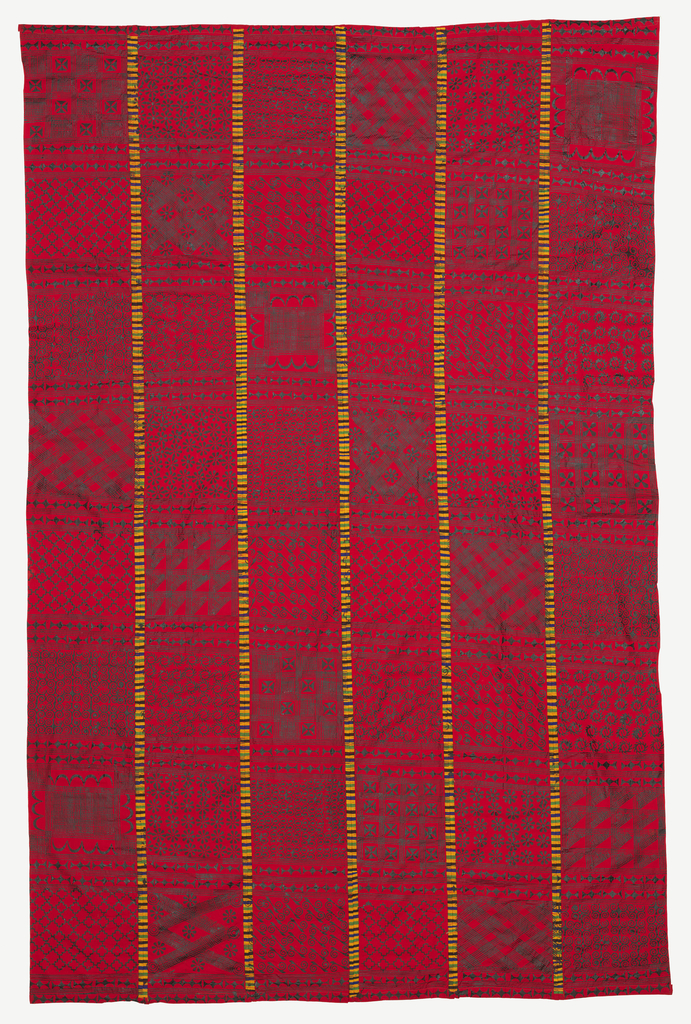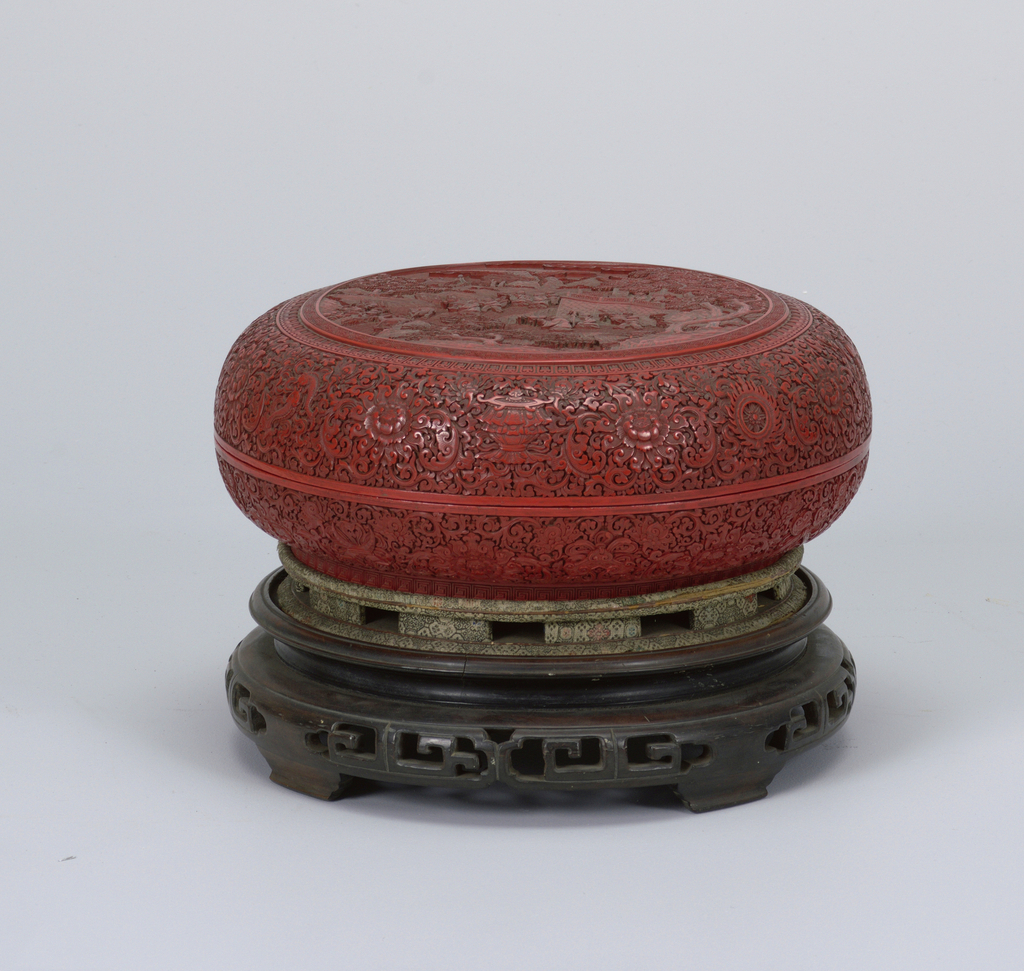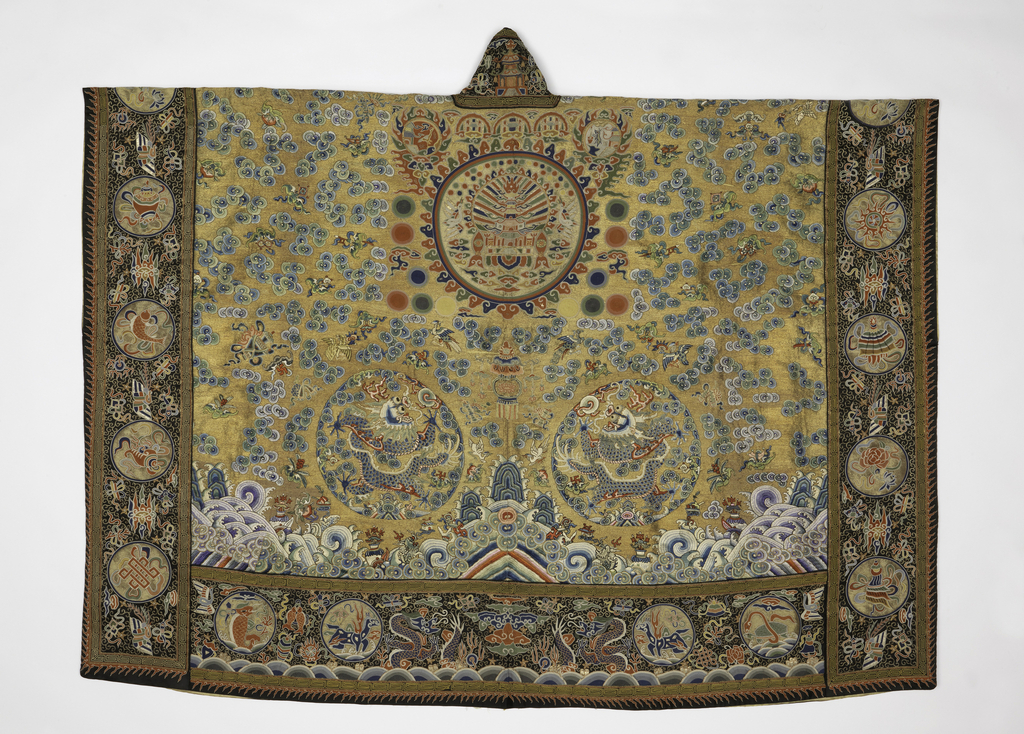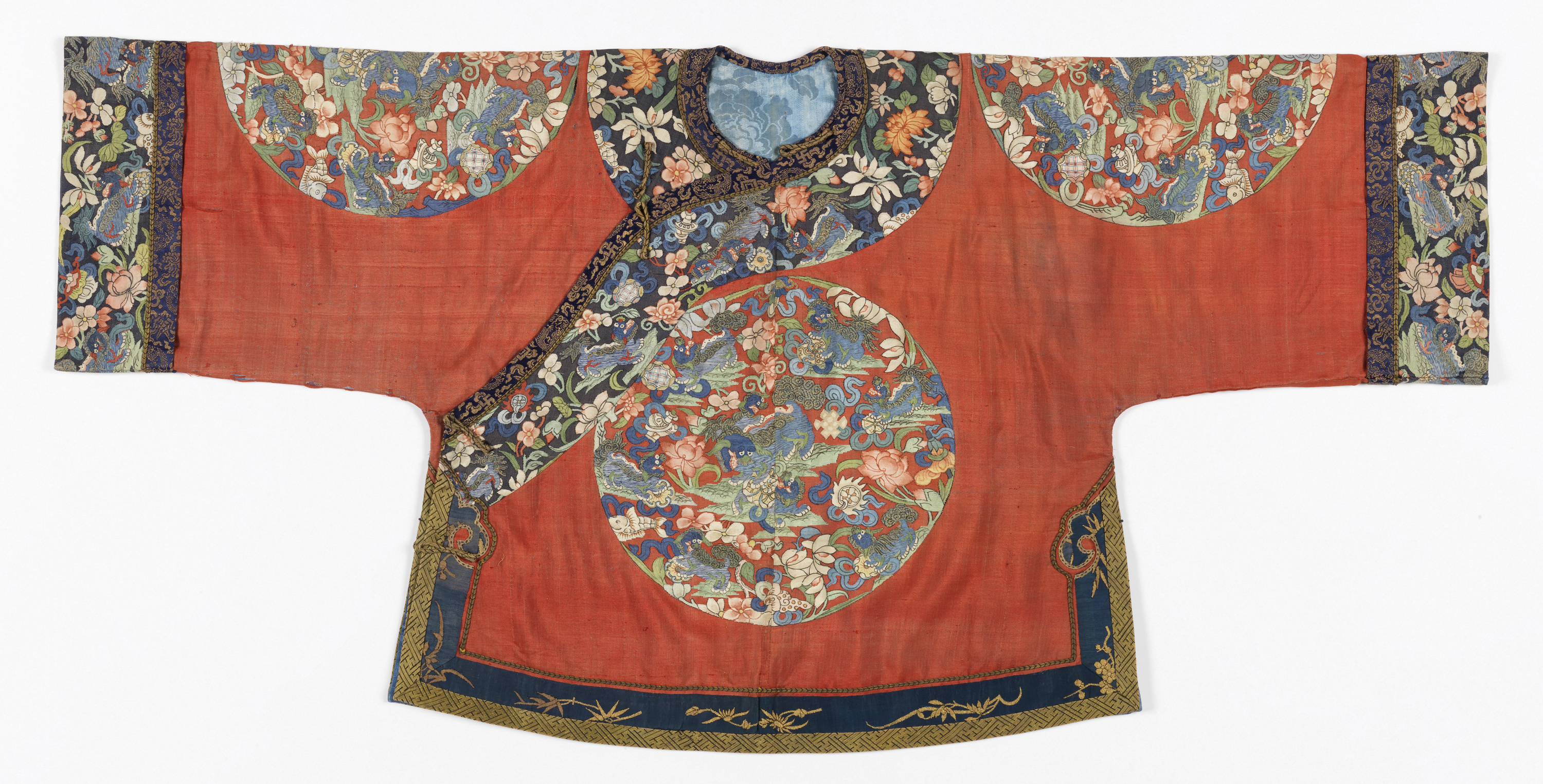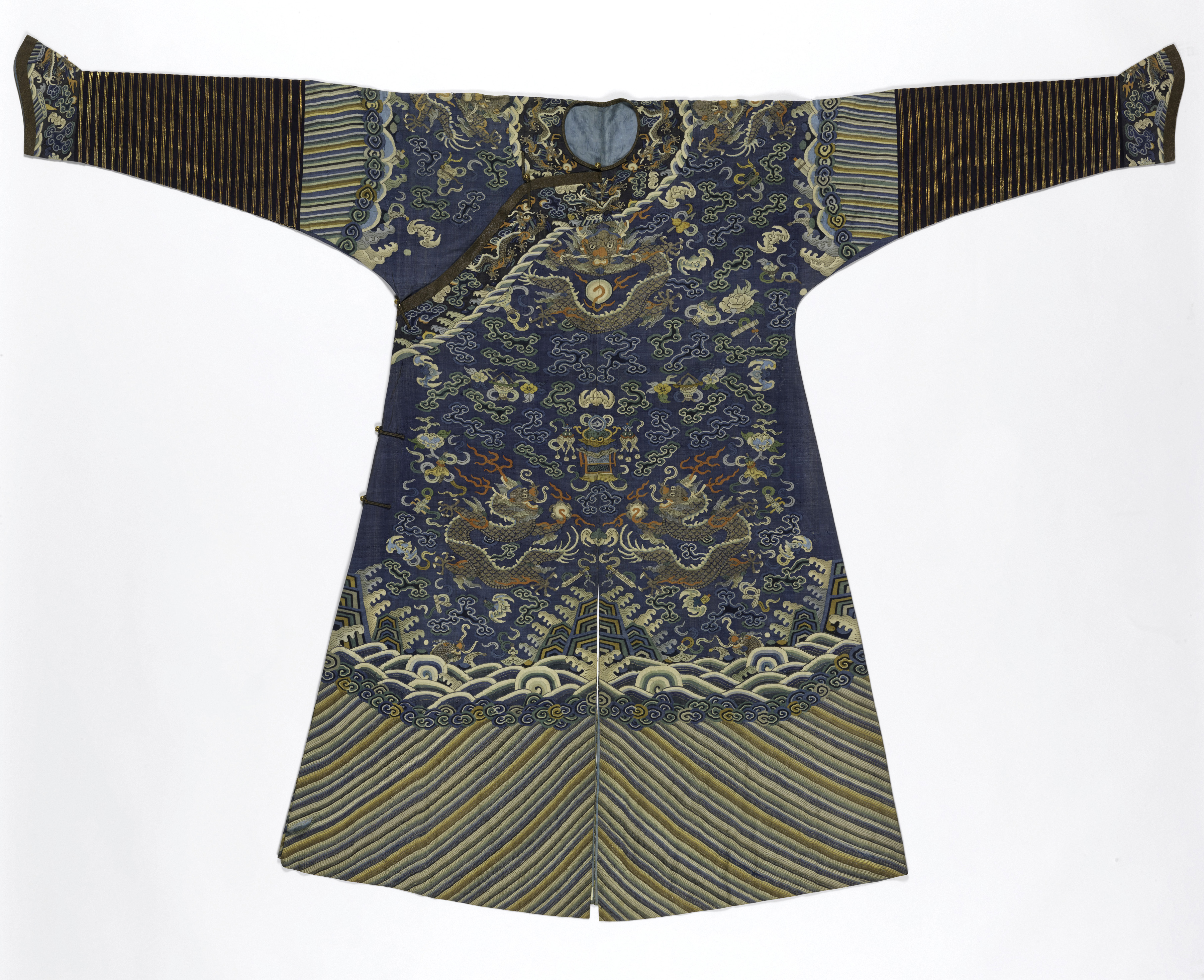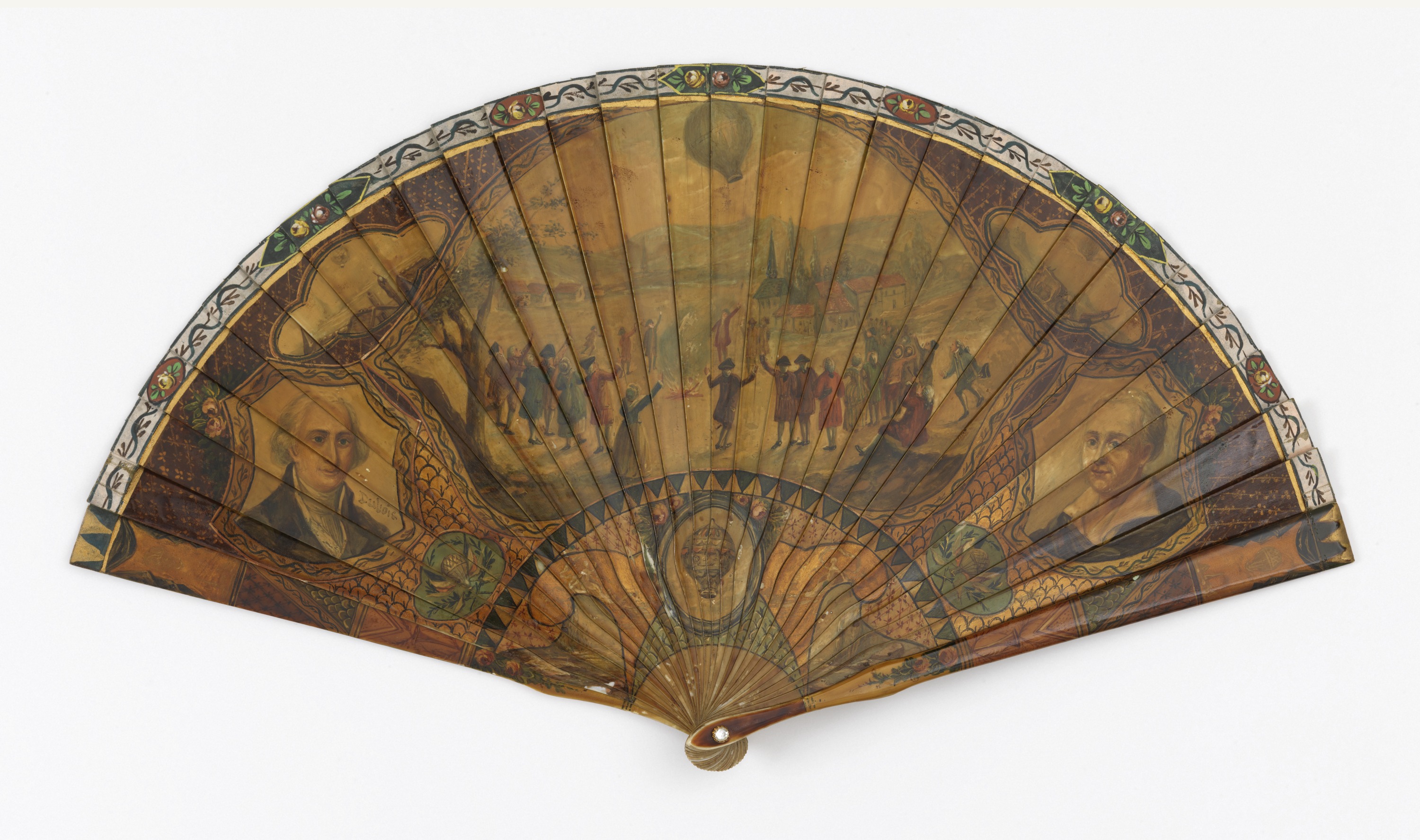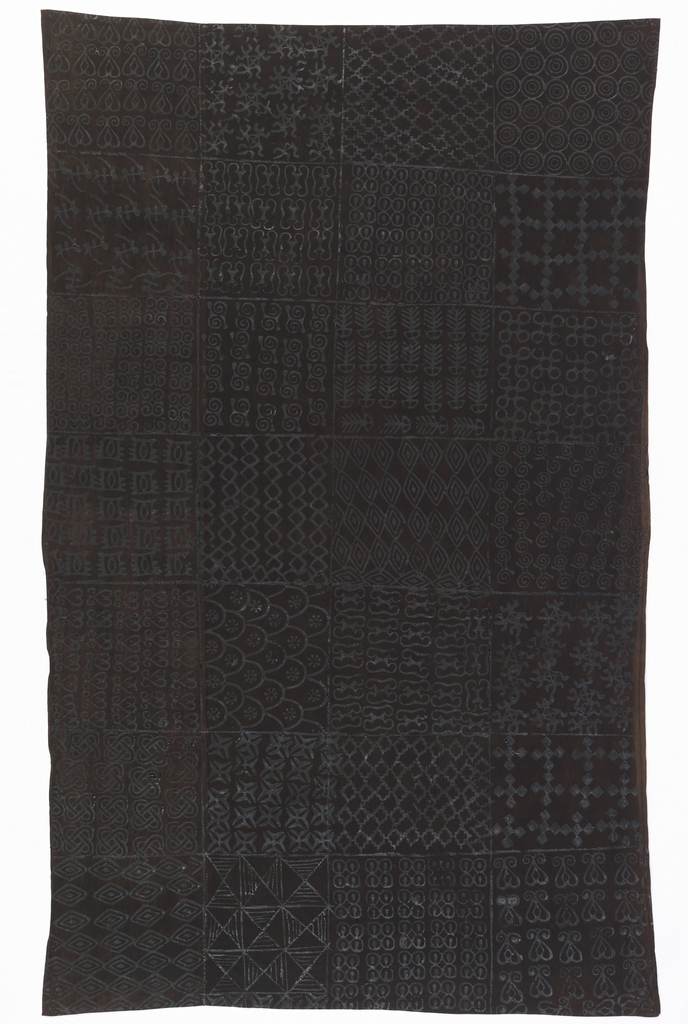How do symbols represent communities?
Henry Dreyfuss's team collected thousands of symbols for the Symbol Sourcebook. What might a Symbol Sourcebook, crowdsourced in 2024 with your submissions, look like?
Author: Precious Lovell In celebration of the third annual New York Textile Month, members of the Textile Society of America will author Object of the Day for the month of September. A non-profit professional organization of scholars, educators, and artists in the field of textiles, TSA provides an international forum for the exchange and dissemination...
To celebrate the opening of Saturated: The Allure and Science of Color (May 11, 2018-January 13, 2019), Object of the Day this month will feature colorful objects from the exhibition. This red lacquer box has a short circular foot and a precisely fitted circular lid. Together these elements combine to present a unified whole. The box rests...
The visual complexity of the “robe of descent” (jiang yi絳衣) worn by the highest-ranking Daoist priests demonstrates how priests used symbols and words to control their environment. The complex symbols were believed to transform the wearer into a ritual participant who communicated between human and spirit worlds. The priest faced the altar to conduct rites,...
The Qing imperial rulers (1644-1911) were of Manchu ethnicity, and ruled over a mostly Han population. For centuries, Manchu women were required to wear long one-piece robes and Han women two-piece outfits that included a jacket and skirt. Featuring elements of both traditions, this Manchu jacket demonstrates the increasing fusion of these fashions in the...
Dragon robes were worn as court dress during the Liao (901-1125), Ming (1368-1644) and Qing (1644-1911) dynasties in China, with embroidered iconography used to symbolize the emperor’s dominion over land and sea. Common elements include waves, forming a wide band at the bottom of the robe, mountains in the central plane, and clouds, occupying the...
This fan commemorates the Montgolfier brothers Joseph-Michel Montgolfier (left, 1740-1810) and Jacques-Étienne Montgolfier (right, 1745-1799), inventors the globe aérostatique (hot air balloon). The central scene shows the brothers’ first public experiment, which took place in Annonay, France on June 4th, 1783 in front of a group of state representatives. That day, a balloon inflated with...
Adinkra wrappers are traditionally worn for funerals. Their many symbols are printed from individually carved stamps, and the selection of symbols and their placement on the gridded cloth are considered a sort of communication from the living to the ancestors. Hundreds of unique symbols have been identified, but their meanings are not easily de-coded. Some...
